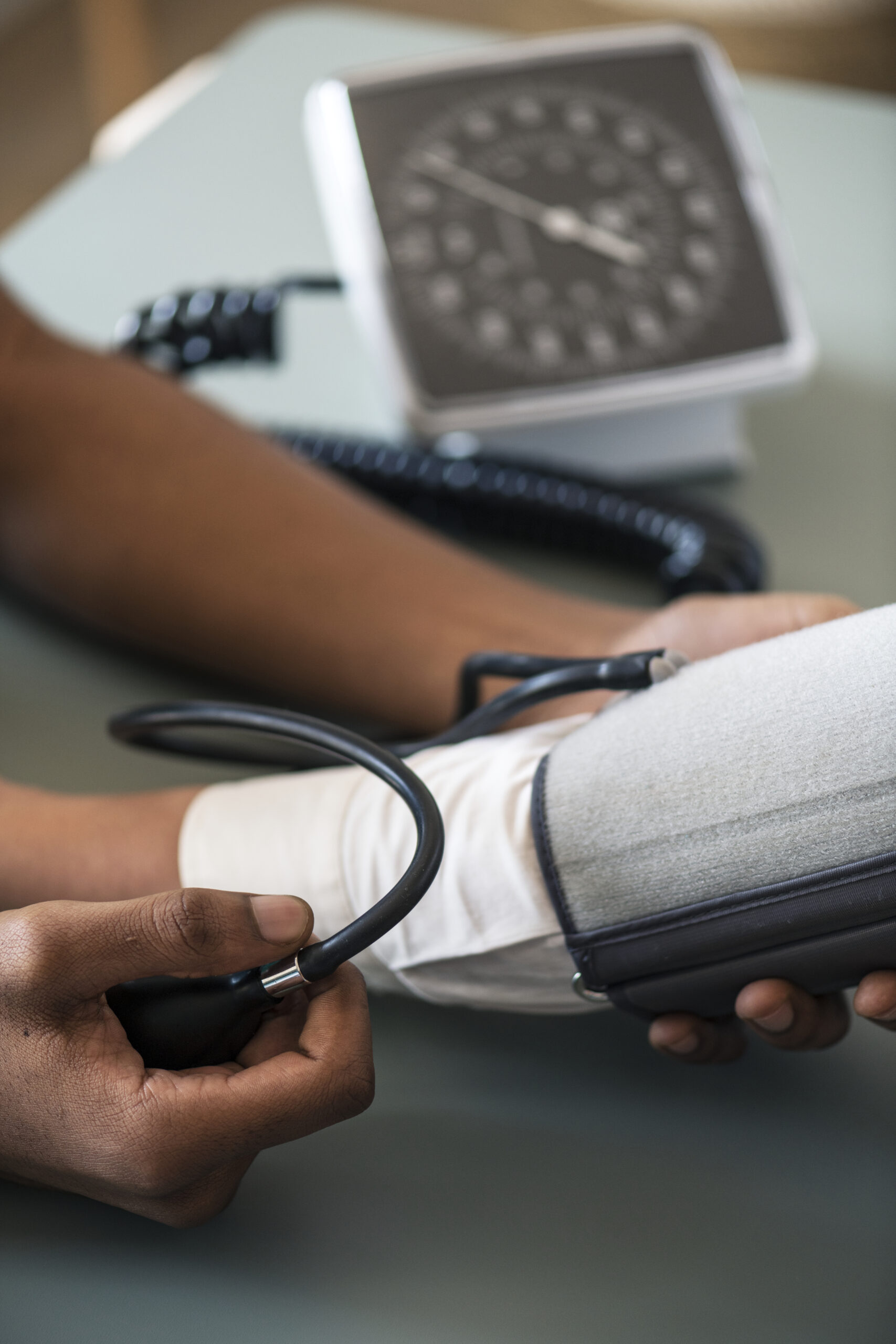🩺 Home Management of Blood Pressure
High blood pressure (hypertension) is one of the most common health challenges worldwide. Often called the “silent killer”, it usually has no obvious symptoms until serious complications develop. Left uncontrolled, it can lead to heart attack, stroke, kidney failure, or vision problems.
The good news? With the right lifestyle habits and consistent monitoring, you can manage blood pressure effectively from the comfort of your home and reduce your risk of complications.
✅ Why Manage Blood Pressure at Home?
Taking charge of your blood pressure outside the hospital or clinic is not just convenient—it can save your life.
- Detect problems early: Regular home monitoring can alert you to rising blood pressure before it causes harm.
- Avoid unnecessary clinic visits: Not every fluctuation needs a doctor’s appointment. Home checks help you know when to seek care.
- Stay engaged in your health: Monitoring and tracking your progress keeps you accountable and motivated.
- Protect your organs long-term: Consistently controlled blood pressure reduces strain on your heart, kidneys, brain, and eyes.
🩸 Step 1: Monitor Your Blood Pressure Regularly
Knowledge is power. Home blood pressure monitoring gives you valuable insights into your daily patterns.
Tips for accurate readings:
- Use a clinically validated digital blood pressure monitor.
- Take readings at the same time each day—morning and evening are ideal.
- Sit quietly for at least 5 minutes before measuring.
- Rest your arm on a flat surface at heart level.
- Record your results in a notebook or a mobile health app for easy tracking.
This habit will help you and your doctor identify trends and make timely adjustments.
🥗 Step 2: Eat for Healthy Blood Pressure
Your diet plays a major role in controlling blood pressure. The DASH diet (Dietary Approaches to Stop Hypertension) is widely recommended for lowering blood pressure naturally.
Practical dietary guidelines:
- Limit salt intake to less than 5 grams per day (about one teaspoon).
- Load up on fruits and vegetables—they provide potassium, magnesium, and fiber.
- Choose whole grains like brown rice, oats, and whole wheat instead of refined carbs.
- Avoid processed and fast foods, which are usually high in salt, sugar, and unhealthy fats.
- Include potassium-rich foods like bananas, avocados, beans, spinach, and sweet potatoes to balance sodium’s effect.
🚶 Step 3: Stay Physically Active
Exercise strengthens your heart and improves circulation, which lowers blood pressure over time.
How to stay active at home:
- Aim for at least 30 minutes of moderate exercise daily, such as brisk walking, cycling, or swimming.
- Incorporate light strength training (resistance bands, body-weight exercises).
- Add flexibility and relaxation routines like yoga or stretching.
- Break up long periods of sitting with short walks or standing breaks.
Even small amounts of regular movement can have a significant impact on your blood pressure.
😌 Step 4: Manage Stress
Stress triggers hormones that temporarily raise blood pressure, and chronic stress can keep it high. Managing stress is essential for heart health.
Simple stress-reducing practices:
- Practice deep breathing or short meditation sessions daily.
- Stick to a regular sleep schedule, aiming for 7–8 hours of quality rest.
- Limit screen time before bed and create a calm sleeping environment.
- Engage in hobbies, music, reading, or light gardening to unwind.
- Connect with loved ones—social support is a natural stress reliever.
🚭 Step 5: Quit Smoking & Limit Alcohol
Lifestyle choices can either support or sabotage your blood pressure goals.
- Quit smoking: Cigarette smoke damages blood vessels, raises blood pressure instantly, and accelerates heart disease risk. The benefits of quitting begin within 24 hours and grow stronger over time.
- Limit alcohol intake: Excessive drinking raises blood pressure and reduces the effectiveness of medications. Stick to one drink per day for women and two for men—or less.
💊 Step 6: Take Medications as Prescribed
Sometimes lifestyle changes alone aren’t enough, and your doctor may prescribe medication to keep your blood pressure in check.
Medication tips:
- Take your medicine at the same time every day.
- Use a pill organizer or phone reminder app to avoid missed doses.
- Never stop your medication suddenly without consulting your doctor.
- Schedule regular check-ups to review and adjust treatment as needed.
📌 Key Takeaway
Managing blood pressure at home is about awareness and consistent action. By monitoring regularly, eating wisely, staying active, managing stress, avoiding harmful habits, and following your doctor’s guidance, you can protect your health and enjoy a longer, more active life.
Remember: Small daily changes add up to big results.
